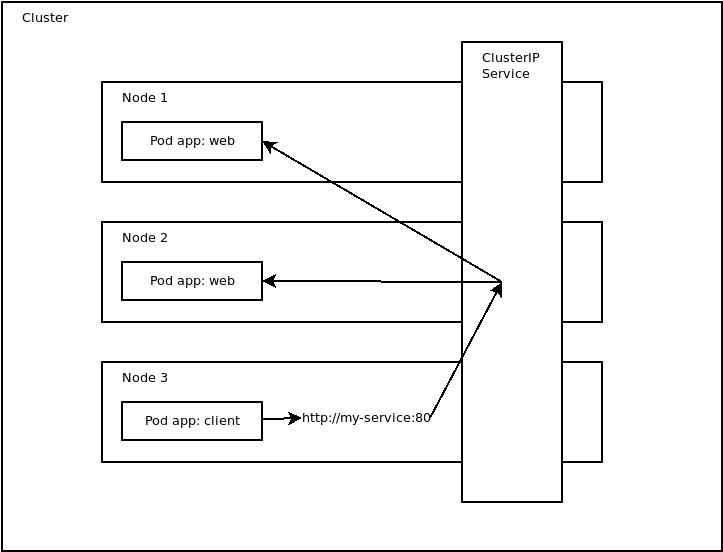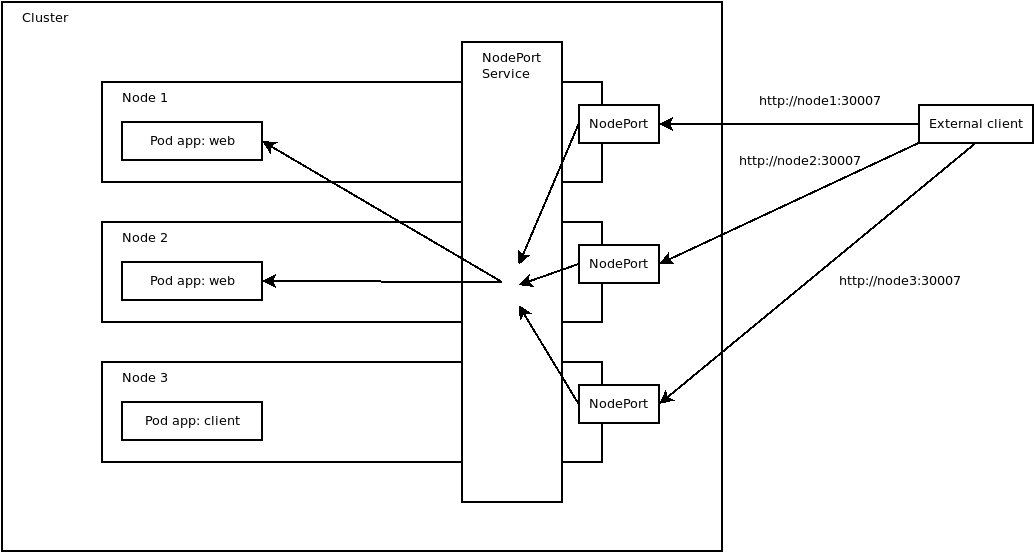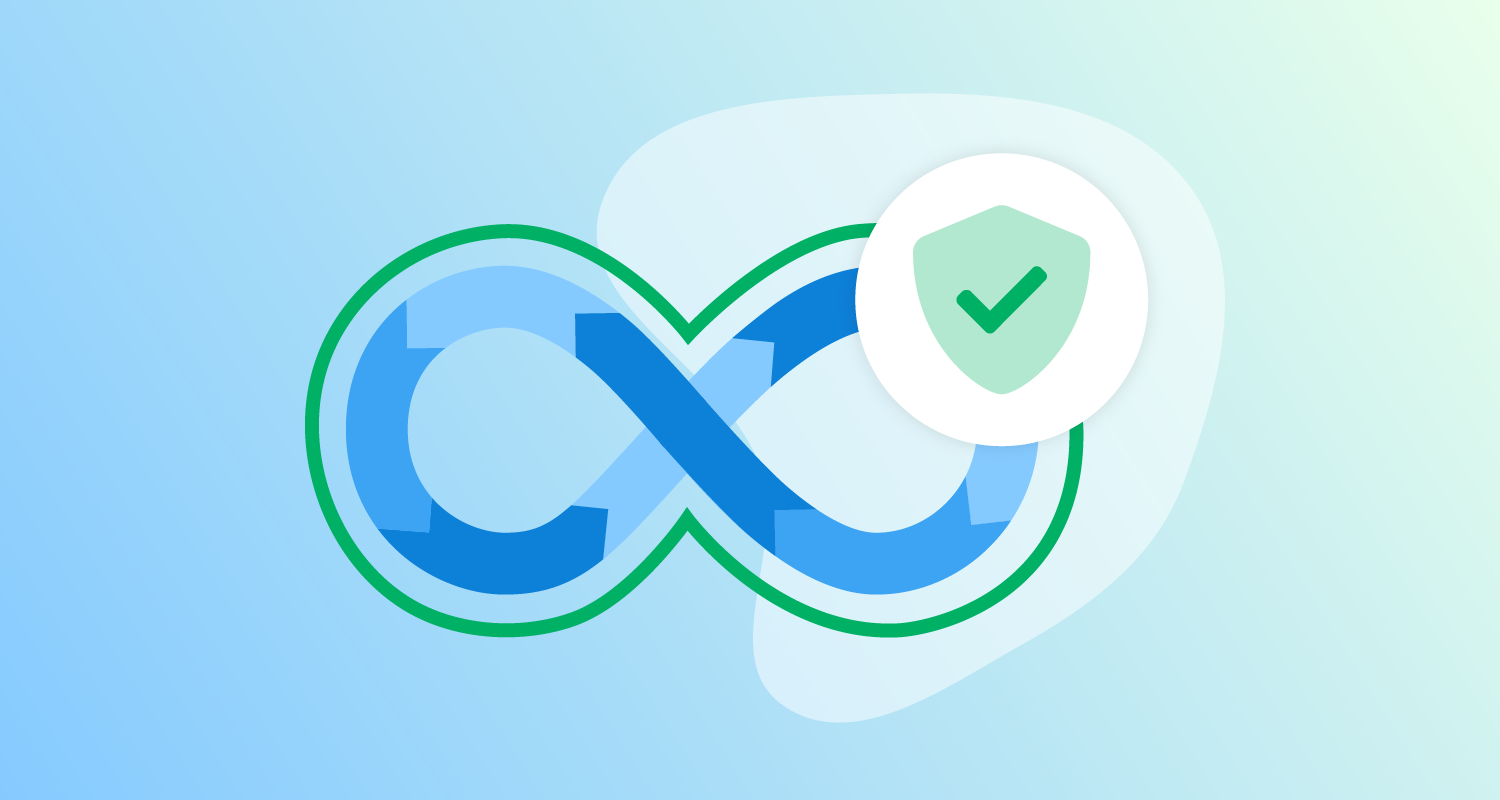Kubernetes services provide three different types:
ClusterIPNodePortLoadBalancer
Knowing which type of service to configure is critical to allowing clients to establish network connections while not exposing services to unnecessary traffic.
In this post, I discuss the 3 types of services and when they should be used.
The ClusterIP service type
The YAML below defines a service of type ClusterIP that directs traffic on port 80 (defined by the port property) to port 8080 (defined by the targetPort property) on any pods with the label app set to web (defined by the selector property):
apiVersion: v1
kind: Service
metadata:
name: my-service
spec:
type: ClusterIP
selector:
app: web
ports:
- protocol: TCP
port: 80
targetPort: 8080ClusterIP services expose pods to internal network traffic. For example, you may expose a database to other pods via a ClusterIP service because external clients should never have direct access to the database.
ClusterIP services expose the smallest surface area and should be used for pods that only need to be exposed to other pods in the cluster.
The diagram below shows how pods in the same cluster can communicate via the ClusterIP service:

The NodePort service type
The YAML below defines a NodePort service that directs traffic on port 30007 on each node (defined by the nodePort property) to port 8080 (defined by the targetPort property) on any pods with the label app set to web:
apiVersion: v1
kind: Service
metadata:
name: my-service
spec:
type: NodePort
selector:
app: web
ports:
- protocol: TCP
port: 80
targetPort: 8080
nodePort: 30007NodePort services expose pods internally the same way a ClusterIP service does. In addition, a NodePort service allows external clients to access pods via network ports opened on the Kubernetes nodes. These ports are typically in the range 30000-32768, although that range is customizable.
NodePort services are useful for exposing pods to external traffic where clients have network access to the Kubernetes nodes. For example, if your nodes have the hostnames node1 and node2, the example service above lets clients access http://node1:30007 or http://node2:30007. It doesn’t matter which node the external client connects to, as Kubernetes configures the network routing to direct all traffic from port 30007 on any node to the appropriate pods.
In practice, I haven’t seen NodePort services used much in production systems. Unusual ports are frequently subject to restrictive firewall rules and it’s hard to understand what service you’re communicating with using a URL like http://node1:30007. NodePort services are great for testing though, as they may not require any additional infrastructure to expose pods to external traffic, making them a quick and easy way to debug a pod.
The diagram below shows how external clients can communicate with pods via ports on the nodes exposed by the NodePort service:

The LoadBalancer service type
The YAML below defines a LoadBalancer service that directs traffic from port 80 (defined by the port property) on a public load balancer and internal service to port 8080 (defined by the targetPort property) on any pods with the label app set to web:
apiVersion: v1
kind: Service
metadata:
name: my-service
spec:
type: LoadBalancer
selector:
app: web
ports:
- protocol: TCP
port: 80
targetPort: 8080LoadBalancer services expose pods internally the same way a NodePort service does. In addition, LoadBalancer services create external network infrastructure to direct network requests to pods in the cluster. On cloud platforms, like Azure, AWS, and GCP, the external load balancer is typically provided by one of the cloud provider’s existing load balancer services. For example, an EKS cluster on AWS may create an Elastic Load Balancer (ELB) to expose pods to public network traffic.
LoadBalancer services are the best choice when pods need to be exposed to external clients via a predictable URL, or when additional control is required over the connections made by external clients. By using existing load balancer solutions offered by cloud providers, LoadBalancer services let administrators configure additional settings like scaling, firewalls, routing, and more on external traffic destined for the pods.
The downside to LoadBalancer services is that they usually incur additional costs. For example, an ELB instance costs roughly $16 per month when left running 24 hours a day, and that’s before any costs associated with network traffic.
The diagram below shows how external clients can communicate with pods via a load balancer created by the LoadBalancer service:

Conclusion
The different types of Kubernetes services provide multiple ways to expose pods to network traffic. Selecting the correct service depends on whether you need to expose a pod internally in a cluster, to external clients that have access to non-standard ports, or to external clients that require the scale and flexibility of dedicated load balancers.
In this post, you learned the difference between the ClusterIP, NodePort, and LoadBalancer services and when each type may be used.
Happy deployments!







